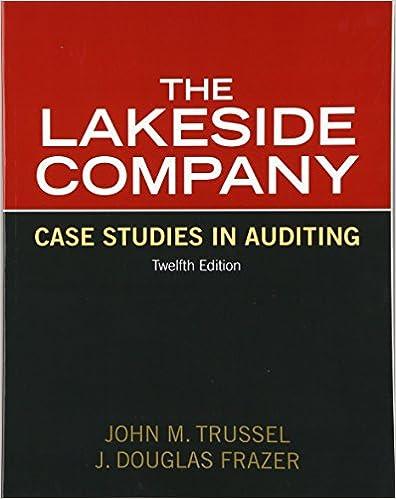Answered step by step
Verified Expert Solution
Question
1 Approved Answer
Revenue Recognition Principles and Practices Revenue recognition is a fundamental accounting principle that outlines when revenue should be recognized and recorded in a company's financial
Revenue Recognition Principles and Practices
Revenue recognition is a fundamental accounting principle that outlines when revenue should be recognized and recorded in a company's financial statements. Proper revenue recognition is essential for accurately portraying a company's financial performance and ensuring compliance with accounting standards, such as the Generally Accepted Accounting Principles GAAP in the United States.
Revenue Recognition Criteria:
Revenue recognition is guided by specific criteria to ensure that revenue is recognized when it is earned and realizable. The key criteria for recognizing revenue include:
Identification of the Contract: Revenue recognition begins with the identification of a contract between the company and its customer. The contract should outline the rights and obligations of each party, including the goods or services to be provided and the agreedupon payment terms.
Performance Obligation: Revenue is recognized when the company satisfies a performance obligation by transferring promised goods or services to the customer. A performance obligation can be satisfied over time or at a point in time, depending on the nature of the goods or services provided.
Determining the Transaction Price: The transaction price is the amount of consideration that the company expects to receive in exchange for transferring goods or services to the customer. The transaction price may include fixed amounts, variable consideration, discounts, and other incentives.
Allocation of Transaction Price: If a contract includes multiple performance obligations, the transaction price is allocated to each obligation based on their relative standalone selling prices. This ensures that revenue is recognized appropriately for each distinct good or service provided.
Timing of Revenue Recognition: Revenue is recognized when control of the goods or services is transferred to the customer, either over time as the company performs its obligations or at a specific point in time.
Revenue Recognition Methods:
There are various methods for recognizing revenue, including:
Accrual Basis: Revenue is recognized when it is earned, regardless of when cash is received. This method matches revenue with the expenses incurred to generate that revenue, providing a more accurate depiction of a company's financial performance.
Cash Basis: Revenue is recognized only when cash is received from customers. While simpler, this method may not accurately reflect the timing of revenue generation and may not comply with accounting standards.
Challenges and Considerations:
Revenue recognition can be complex, especially for transactions involving multiple performance obligations, variable consideration, or longterm contracts. Companies must exercise judgment and apply accounting principles consistently to ensure proper revenue recognition. Additionally, changes in accounting standards, such as the adoption of the new Revenue Recognition Standard ASC in the United States, may impact how companies recognize revenue and require adjustments to their accounting practices.
Fill in the Blank Question:
According to revenue recognition principles, revenue is recognized when the company satisfies a by transferring promised goods or services to the customer.
A Contract
B Invoice
C Payment
D Performance obligation

Step by Step Solution
There are 3 Steps involved in it
Step: 1

Get Instant Access to Expert-Tailored Solutions
See step-by-step solutions with expert insights and AI powered tools for academic success
Step: 2

Step: 3

Ace Your Homework with AI
Get the answers you need in no time with our AI-driven, step-by-step assistance
Get Started


